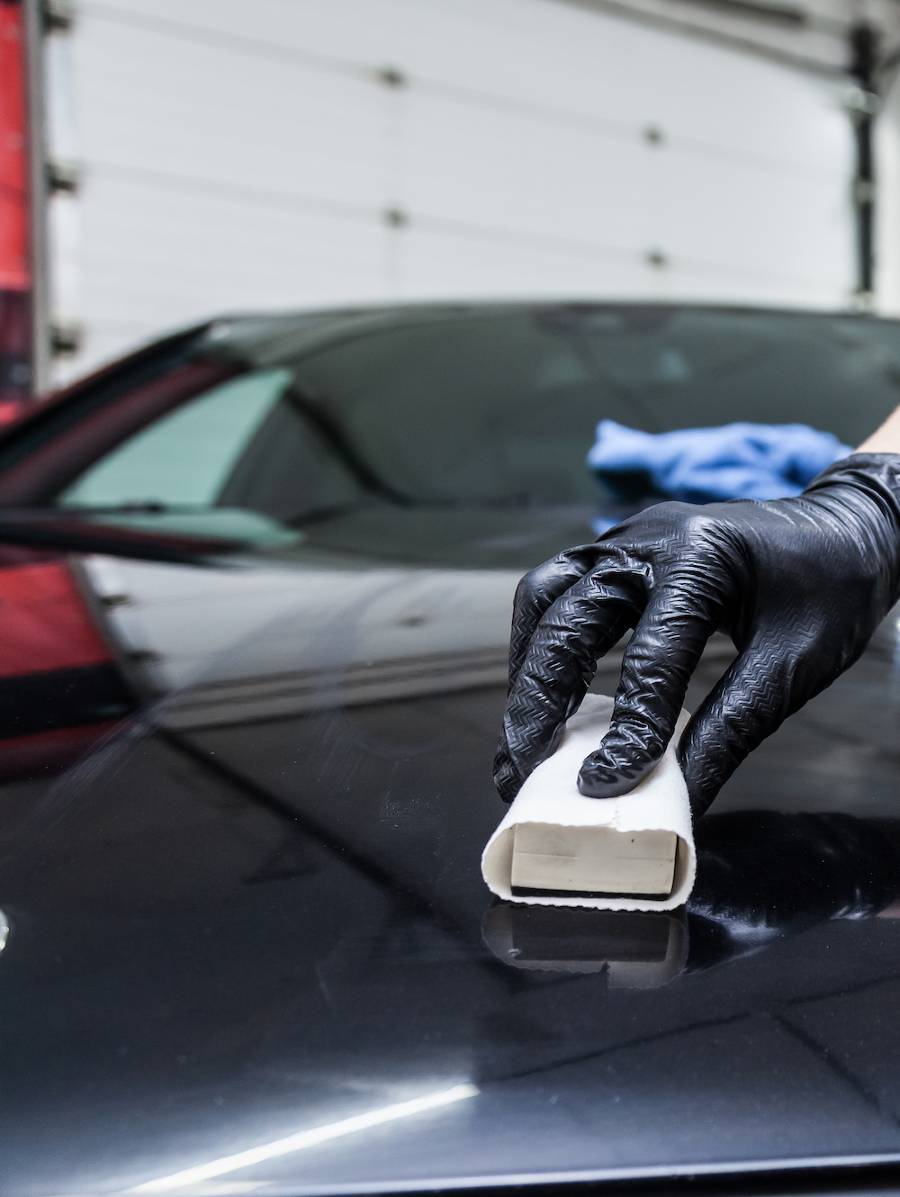The Role of Ceramic Coating Philadelphia in Stopping Scratches and Damage
The Role of Ceramic Coating Philadelphia in Stopping Scratches and Damage
Blog Article
Why Ceramic Finish Is the Ultimate Solution for a Perfect Finish
Ceramic coating has actually arised as a leading remedy for those looking for a flawless coating for their automobiles, many thanks to its remarkable sturdiness and protective features. What aspects really set ceramic finishing apart?
What Is Ceramic Layer?

When applied properly, ceramic coating develops a hydrophobic surface that drives away water and dust, making it less complicated to preserve and clean. Unlike traditional waxes or sealers, which usually provide temporary protection, ceramic finishes can last for a number of years, depending upon the product quality and application method. The procedure of applying ceramic layer needs careful prep work, including extensive cleansing and in some cases repaint correction, to make sure ideal bonding and effectiveness.
Ceramic finishes are not limited to automobile surfaces; they can likewise be made use of on numerous materials, consisting of glass, metal, and plastics, supplying a versatile remedy for improving security. Overall, ceramic finishing stands for a significant innovation in surface defense modern technology, incorporating both visual and useful advantages for a large array of applications.
Benefits of Ceramic Covering
While lots of surface area protection choices exist, the benefits of ceramic finish stand apart as a result of its special residential properties and resilient performance. Among the primary benefits is its remarkable longevity. Ceramic Coating Philadelphia. Unlike traditional wax or sealers that require constant reapplication, ceramic finishes provide a resistant layer that can last for numerous years, substantially reducing upkeep initiatives
Another significant advantage is boosted defense versus ecological pollutants. Ceramic finishes create a hydrophobic surface that fends off water, dust, and different contaminants, making it much easier to clean. This attribute not just preserves the vehicle's appearance yet likewise decreases the danger of corrosion and oxidation, specifically in harsh weather.
Moreover, ceramic coverings offer exceptional resistance to UV rays, protecting against fading and degradation of paint over time. This UV security is essential for preserving the visual value of surface areas and lorries revealed to direct sunlight.
Additionally, the glossy finish accomplished with ceramic covering enhances the overall visual charm, offering surfaces a showroom-quality sparkle. In general, ceramic finishes stand for a considerable innovation in surface area defense innovation, giving enduring benefits that provide to both aesthetic and practical needs.
How It Works
Comprehending the science behind ceramic finishings exposes exactly how they provide such amazing protection and longevity. At its core, a ceramic finishing is a liquid polymer that chemically bonds with the vehicle's manufacturing facility paint. This bonding develops a safety layer that is both hydrophobic and oleophobic, repelling water, dust, and oil. The key element of many ceramic layers is silicon dioxide (SiO2), which is stemmed from quartz. This substance adds to the coating's solidity and resistance to scratches, UV rays, and ecological pollutants.
The application process entails multiple actions, consisting of surface area prep work, which is critical to attaining optimum bond. Once used, the layer goes through a healing process, throughout which it sets and forms a semi-permanent bond with the paint surface area. This bond is what distinguishes ceramic coatings from traditional waxes and sealers, giving a longer-lasting protective obstacle that can endure for many years.
Additionally, the density of the layer can boost its protective high qualities, ensuring that it can withstand severe problems. Inevitably, the science of ceramic finishes combines advanced materials with cutting-edge application methods to supply an exceptional degree of defense and visual enhancement for cars.
Comparison With Traditional Methods
The advantages of ceramic finishings end up being especially apparent when compared to traditional paint defense techniques click for more info such as sealants and waxes. While waxes provide a short-lived sparkle, usually lasting a couple of weeks to a couple of months, ceramic layers offer a durable safety layer that can sustain for several years. This sturdiness dramatically lowers the regularity of reapplication, making ceramic layers an extra cost-effective remedy with time.
Additionally, traditional methods often require substantial preparation and several applications to accomplish an acceptable degree of security. In comparison, ceramic finishes bond at a molecular degree with the lorry's surface area, producing a robust shield against ecological contaminants like UV rays, acid rainfall, and roadway salts. This bond boosts the automobile's resistance to scrapes and swirl marks, which are prevalent with conventional waxes and sealers.
Moreover, the hydrophobic buildings of ceramic finishings drive away water and dust, bring about less complicated cleaning and upkeep. In contrast, wax and sealant-treated surfaces can draw in gunk, necessitating more regular washing - Ceramic Coating Philadelphia. Generally, ceramic coatings not only offer premium defense but likewise deliver an extra visually attractive and long-lasting finish, developing them as the recommended option for critical lorry proprietors
Application and Maintenance Tips

Using a foam applicator, use the layer in small sections, adhering to the supplier's standards concerning thickness and overlap. Allow sufficient treating time between layers, usually 1 day, to guarantee proper bonding. After application, it is crucial to prevent direct exposure to water or extreme components for a minimum of a week to enable the covering to completely treat.
Furthermore, making use of a ceramic upkeep spray can enhance the layer's hydrophobic buildings and longevity. Regular evaluations for any type of indicators of wear will certainly aid keep the layer's integrity and maintain that excellent finish.
Final Thought
In final thought, ceramic coating arises as a remarkable alternative for achieving a remarkable automotive finish. Its remarkable longevity, safety high qualities, and hydrophobic residential properties significantly improve the vehicle's appearance while streamlining upkeep initiatives. By developing a robust bond with manufacturing facility paint, ceramic covering effectively shields versus useful site scratches, UV rays, and environmental contaminants. With a lifespan prolonging numerous years, this sophisticated service not only protects but likewise boosts the general aesthetic click now appeal of cars, making it an economical investment for cars and truck lovers.

Report this page